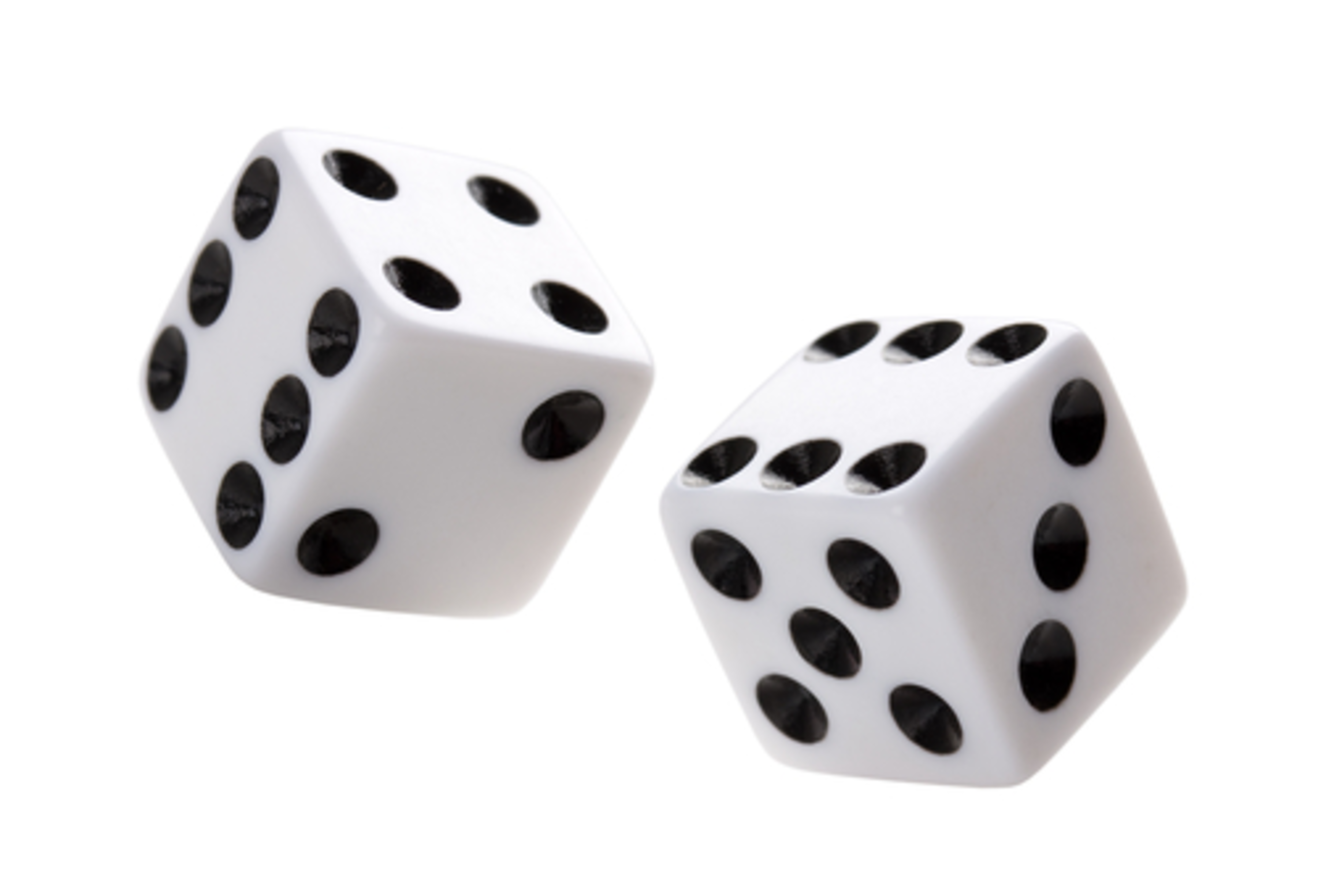The Big Six

In the Big Six game, you can place a 1-dollar bet to toss 2 fair six-faced dice for a chance to increase it by the multiple of 6. The amounts of gain or loss depend on the pips as followed:
- 2-6 pips: -12 $
- 7-9 pips: +6 $
- 10-12 pips: +12 $
Moreover, if both dice show up the same number, the amount of money earned or lost will be doubled. For example, if both dice have 6 on their faces, you can win the maximum jackpot of 24 dollars!
What is the expected value of this 1-dollar bet? Submit your answer in the nearest 3 decimal places.
Bonus : Is this game worth a gamble?
The answer is 0.333.
This section requires Javascript.
You are seeing this because something didn't load right. We suggest you, (a) try
refreshing the page, (b) enabling javascript if it is disabled on your browser and,
finally, (c)
loading the
non-javascript version of this page
. We're sorry about the hassle.
1 solution
In your last step, − 6 + 3 8 + 3 8 = − 3 2 .
Log in to reply
Oh, right. I forgot to plus 1. Thank you.
Log in to reply
Why did you add 1?
Log in to reply
@Jon Haussmann – Well, it's from 1 dollar bet.
Log in to reply
@Worranat Pakornrat – But presumably that's a dollar you pay to play this game; it's an upfront loss, so in terms of expected winnings, you should subtract 1, not add it.
Log in to reply
@Jon Haussmann – Well, I was taking example from this link . It stated in the second example of roulette game. After the expected profit part, it said about the expected value of the bet.
Log in to reply
@Worranat Pakornrat – So in your example, in a Straight up bet, you put down a dollar. If you "lose", you lose the dollar. If you "win", you get your dollar back plus $35. The first calculation which leads to an expected value of − $ 0 . 0 5 2 6 reflects this. Then for some reason, the article adds a dollar to this amount, to get $0.9474. This makes no sense to me.
Interestingly, in the Wikipedia article on Roulette, the odds table lists an expected value of − $ 0 . 0 5 3 on a Straight up bet; I think you'll find that almost every source will say the same thing.
Edit: The main question here is, what is the value of the bet? Is it what we expect to get back, after we have paid the dollar? Or is it the overall profit/loss? The answer depends on which you mean. I have always gone with the second interpretation; it still seems to odd to me to go with the first interpretation, but it does seem plausible.
So in a question like this, you need to specify two details. First, for the value of the bet, which option do you mean? Second, what happens to the original dollar that you place down? If you win, is this original dollar returned to you or not? We need both pieces of information to answer the problem correctly.
For 2-6 pips, the combination of both dice showing 1-3 = 3*3 = 9 ways. Additionally, for 6 pips, there are 6 more ways: 1+4, 4+1, 1+5, 5+1, 2+4, & 4+2. As a result, there are 15 ways to toss for 2-6 pips.
However, from the double stake rule, we have to double the weight of these double faces. In other words, for 2-6 pips, there are 3 possible doubles we need to add to the combination: 1+1, 2+2, & 3+3.
Therefore, the expected loss from 2-6 pips = (-12) 3 6 ( 1 5 + 3 ) = (-12) 3 6 1 8 = -6 $
For 7-9 pips, if one die shows 6, the other value varies from 1-3. if one die shows 5, the other value varies from 2-4. Then the rest of the combination is: 4+3, 3+4, & 4+4. After all, there are 15 ways to get 7-9 pips, but again, we have to add 4+4 weight, according to the rule.
Therefore, the expected profit from 7-9 pips = (6) 3 6 ( 1 5 + 1 ) = (6) 3 6 1 6 = 3 8 $
Finally, for 10-12 pips, there are 6 possible ways: 4+6, 6+4, 5+5, 5+6, 6+5, 6+6. For 5- and 6-doubles, we will add in the weights for these 2 ways as done above:
Therefore, the expected profit from 10-12 pips = (12) 3 6 ( 6 + 2 ) = (12) 3 6 8 = 3 8 $
Hence, the expected value for this 1-dollar bet = 1 -6 + 3 8 + 3 8 = 3 1 ≈ 0.333 $.
In other words, statistically you will lose 2 thirds of a dollar if you decide to gamble in this game.